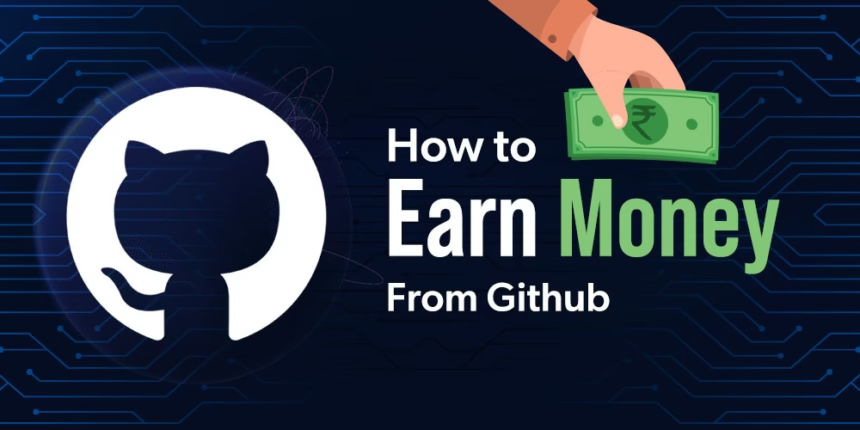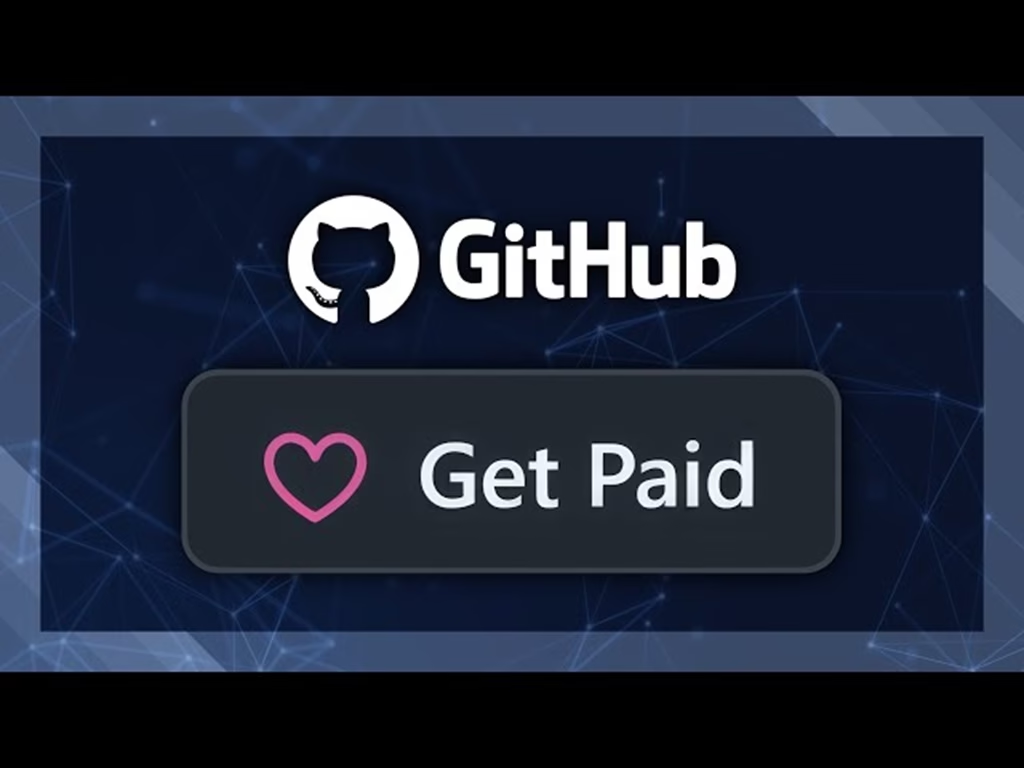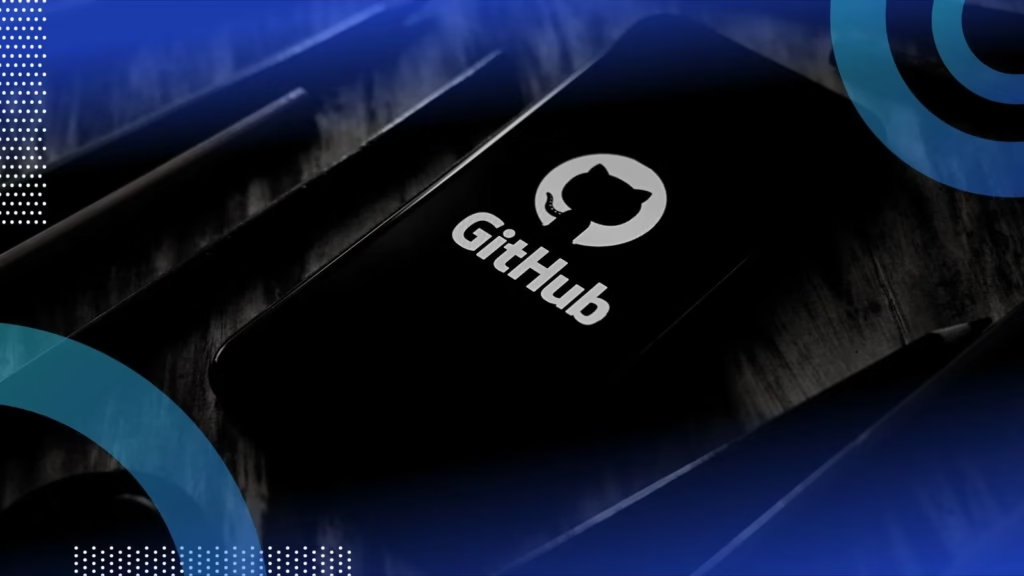Want to turn GitHub stars into real dollars? Good news, it is easier than it looks. With a clear offer, simple pricing, and a clean path to pay, a developer can turn a repo into income without turning into a full-time salesperson.
This guide shows how to make money from your GitHub projects using models that work in 2025: GitHub Sponsors, open core add-ons, hosted cloud versions, paid support and training, and commercial licenses. It also covers extra streams like books and courses, merch, paid newsletters, bug bounties, ads on a project site, usage data partnerships, and, in rare cases, selling the project.
This helps solo devs, small teams, and maintainers who want a side income or a full-time business. By the end, readers will know how to prepare a repo to sell value, choose a model, set pricing and payments, and ship a simple launch plan.
GeeksforGeeks explains popular ways developers earn from GitHub, from sponsorships to bounties. The sections below turn those ideas into a step-by-step plan.
Pick a project people will pay for, then prepare the repo to sell the value
A buyer pays to remove a headache. Pick a problem with a clear pain, a known audience, and frequent use. One strong example beats ten scattered tools.
Ask simple questions. Who uses this? What breaks for them today? How much time or money will they save by using this project? The answers shape the pitch and the price.
Find a real problem and a clear buyer
- Define the ideal user: student, indie dev, startup, or enterprise team.
- List painful jobs the project makes faster, cheaper, or safer.
- Map the value: time saved, fewer bugs, better security, or less toil.
- Check demand signals: stars, issues, forks, downloads, and comments.
- Note where the buyer already spends money today. That hints at pricing power.
A project that saves an SRE team two hours a week is easier to sell than a neat experiment. A tool that helps startups pass SOC 2 audits lands bigger contracts than a hobby script.
Polish the README, docs, and demo so the value is obvious
Buyers skim. Help them see the win in seconds.
- Open with who it is for and a one-line value proposition.
- Add a quickstart that works in under 5 minutes.
- Show a short demo video of GIF, plus real examples.
- Include badges, screenshots, and a clear roadmap.
- Link to docs, a changelog, and a simple email for sales or support.
Think of the README like a product page. Use a clean H1, a short pitch, and a bolded call to action. Make the installation and success steps clear. A 2-minute demo beats a long description.
GitHub’s own guide to finding ways to contribute can also help shape a community that supports growth and trust. Clear contribution signals often lead to more issues, more feedback, and better proof of demand.
Choose a license that supports the money plan
Licenses set guardrails, not walls. Choose one that matches the model.
- Permissive licenses like MIT or Apache-2.0 boost adoption and reduce friction.
- Copyleft licenses like GPL keep changes open. AGPL can encourage hosted licenses.
- Dual licensing is common: open source for the community, commercial for companies.
- Protect the project name and logo with a simple trademark policy.
- Add a short, plain-language license summary in the README to reduce confusion.
If the plan is hosted or embedded licensing, AGPL plus a commercial option can work well. If the plan is broad adoption and paid add-ons, MIT or Apache-2.0 often helps.
Add funding and community files that build trust
Buyers want to see healthy project hygiene.
- Add FUNDING.yml to surface GitHub Sponsors, Patreon, PayPal, or Open Collective.
- Include CONTRIBUTING.md, CODE_OF_CONDUCT.md, and SECURITY.md.
- Use issue and PR templates to save time. Label good first issues.
- Sign releases and document how to report security bugs.
- State response times for issues and paid support to set expectations.
Trust is earned through small details. Clear policies reduce risk for teams that might pay.
Choose a money model that fits the code and audience
Pick the path that matches the repo and the buyer. It is fine to mix models, and fine to change over time.
GitHub Sponsors and community support
Sponsors are the simplest way to start. They reward ongoing work and signal interest.
- Offer clear tiers with real value: early releases, sponsor-only discussions, roadmap votes, or badges.
- Add one-time tips for casual fans.
- Use a short sponsor pitch in the README: what is funded and what sponsors get.
- Share monthly updates so sponsors see the impact.
- Treat sponsors as early customers while larger models take shape.
Sponsors are an excellent seed income, and they help validate direction before building paid features.
Open core with paid add-ons or plugins
Keep the core free and valuable. Sell convenience, scale, security, and support.
- Sell SSO, audit logs, role-based access, advanced policy, or premium integrations.
- Package add-ons as separate modules or a pro build.
- Document a clean public API and plugin system.
- Offer team and enterprise tiers with permissioning and compliance controls.
- Avoid locking the core. Place value on speed, security, and ease of use.
This model works well for dev tools, frameworks, and infra projects that thrive with community use.
This practical guide on turning repos into income explains how to productize and choose a model. Pair these steps with a clear plugin boundary to keep the core healthy.
Host it for them as a paid cloud service.
Many users want zero setup. A hosted version can be the fastest path to revenue.
- Offer a free tier, then paid tiers by usage, seats, or features.
- Include backups, uptime, and support promises.
- Make migration easy with import, export, and self-host paths.
- Track time to first success and remove friction.
- Automate billing, receipts, and plan upgrades.
This is strong for tools where maintenance, security, or scale matters. If the code runs on a server, someone will pay to not run it.
Paid support, training, and custom work for teams
Companies often need help beyond the code. Sell time and outcomes.
- Offer SLAs, dedicated support channels, and response times.
- Run onboarding workshops, private training, and office hours.
- Quote fixed-fee feature work with a clear spec and delivery date.
- List support packages in the README or site with pricing ranges.
- Consider bug bounties or funded issues for targeted fixes.
Services can start generating ash flow while product revenue grows. They also build case studies and trust.
Price, license, and set up payments the smart way.
Buyers want clear pricing and easy checkout. Reduce friction at every step.
Pick a pricing model that matches value
Start simple. Align the price with what the user cares about.
- Use tiers: Free, Pro, Team, Enterprise.
- Pick value metrics users understand: seats, projects, usage, or features.
- Add an annual discount to improve cash flow.
- Publish a roadmap and call out which tier gets which features.
- Review price twice a year as adoption grows.
Pricing can be a table, not a maze. If a user cannot choose in 10 seconds, it is too complex.
Pick a license and commercial terms that reduce friction
Short-term speed up buying, especially for teams.
- For permissive cores, offer optional commercial licenses for proprietary use.
- For AGPL, offer commercial licenses for hosted or embedded use.
- Provide a one-page, plain-language license summary.
- Add a simple DPA or security note if handling user data.
- Offer trials and proof-of-concept terms for larger companies.
Legal clarity is a feature. It saves time for both sides and speeds up approvals.
Set up payments and fund buttons that convert
Make paying easy across the repo, docs, and site.
- Configure GitHub Sponsors with clear tier perks.
- Add Stripe or PayPal links for Pro and Team plans.
- Place buy buttons in the README, docs, and site header.
- Use FUNDING.yml so buttons show up on GitHub.
- Send welcome emails and receipts, and include a quickstart link.
A short post-purchase email with a ggetting-startedguide guide lowers refunds and boosts activation.
This step-by-step guide on making money with GitHub covers sponsor setup and simple monetization tactics. Use it as a checklist while wiring up payments and perks.
Write simple support, security, and SLA policies
Policy pages are part of the product. Keep them short and direct.
- Publish response times, support channels, and update cadence.
- Add a SECURITY.md with safe disclosure steps.
- Explain version support for Windows.
- Share a short privacy note for hosted services.
- Keep it on one page so buyers approve fast.
Consistency builds trust. If the policy says 48 hours, reply in 48 hours.
Launch, promote, and scale revenue from the GitHub project
Plan 30 to 60 days. Ship, promote, listen, and tune. Keep it useful, not hype.
Ship a crisp launch with a working demo and roadmap
Treat the first paid release like a product launch.
- Publish a tagged release with notes focused on outcomes, not just changes.
- Record a 2 to 3-minute demo.
- Share a public roadmap with milestones.
- Pin an issue for feedback and feature requests.
- Thank early users by name to build goodwill.
Small touches matter. A clear demo and a friendly tone draw the right audience.
Make GitHub and docs rank for the right keywords
Search brings steady users long after launch.
- Put the main keyword in the repo name, description, topics, and README H1.
- Add a features list and a simple comparison table in the docs.
- Create guides for common jobs to be done. Aim each at a search term.
- Use internal links between docs, README, and the site.
- Track traffic with GitHub Insights and a privacy-friendly analytics tool.
Example table:
| Plan | Who it is for | Key limits | Price |
|---|---|---|---|
| Free | Hobby users, students | 1 project, 2 seats | $0 |
| Pro | Solo devs | 5 projects, 1 seat | $12 per month |
| Team | Small teams | 20 projects, 10 seats | $79 per month |
| Enterprise | Larger orgs | SSO, audit logs, SLA | Contact sales |
Promote in developer communities without spam
Earn attention with helpful content. Share value, not hype.
- Post releases on Product Hunt, Hacker News, Reddit dev subs, and X with a useful angle.
- Share short how-to clips and code snippets.
- Join related Discords or forums and help first, then mention the project when it fits.
- Ask happy users for a short testimonial or a logo, then add it to the README.
- Offer a discount or sponsor slot for early adopters.
Light, honest updates build steady interest. The right users will spread the word.
For a taste of how other developers think about earning, this thread on how devs earn from GitHub captures community views and common paths. Use it to check your assumptions against real feedback.
Stack extra revenue streams as the project grows
With a base in place, layer in more options.
- Sell merch with the project brand for superfans.
- Write a short book or build a course that teaches core skills.
- Launch a paid newsletter with tips, templates, or advanced patterns.
- Place tasteful ads on the project site if it has real traffic.
- Explore data or telemetry partnerships with clear opt-in and privacy controls.
- In rare cases, a company may acquire the project. Keep tidy docs and a clean license trail to be ready.
Stay focused. Add only what improves the user’s outcome, or improves cash flow without hurting the product.
Conclusion
A simple action plan beats a perfect plan. Week one, polish the README and add FUNDING.yml. Week two, choose a model and ship basic pricing. Week three, record a demo and launch a tagged release. Week four, talk to users and refine tiers. Most successful projects mix models over time: sponsors for community, open core or hosting for steady income, and services for larger deals.
Pick one next step today, like setting up Sponsors or writing the first Pro feature. Keep the path to pay short, the value clear, and the trust high. With focus and small wins, turning a repo into real income is well within reach.

















